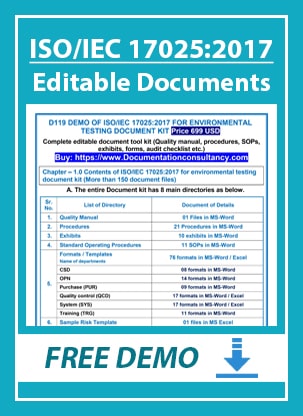Blog
※ Download: What is iso 17025
We also have the largest scope of accreditation in the minerals industry. Around the world, geo-political regions such as the , and Asia-Pacific, the Americas and others, established regional cooperations to manage the work needed for such mutual recognition. It is also the basis for accreditation from an Accreditation Body.

For more on what ISO 9001:2015 says about operations, see this article on. Containing the operation clauses of ISO 9001:2015, the ISO 17025:2017 standard is basically a set of how-to instructions for calibration laboratories to address these requirements.

What is ISO 17025 - Process Requirements are the heart of this version of the standard in describing the activities to ensure that results are based on accepted science and aimed at technical validity.

This article needs additional citations for. Unsourced material may be challenged and removed. In many cases, suppliers and regulatory authorities will not accept test or calibration results from a lab that is not accredited. Since its initial release, a second release was made in 2005 after it was agreed that it needed to have its quality system words more closely aligned with the 2000 version of ISO 9001. The most significant changes introduced greater emphasis on the responsibilities of senior management, and explicit requirements for continual improvement of the management system itself, and particularly, communication with the customer. Management requirements are primarily related to the operation and effectiveness of the within the laboratory. Technical requirements includes factors which determines the correctness and reliability of the tests and calibrations performed in laboratory. General Requirements and Structural Requirements are related to the organization of the laboratory itself. Structure Requirements cite those issues related to the people, plant and other organizations used by the laboratory to produce its technically valid results. Process Requirements are the heart of this version of the standard in describing the activities to ensure that results are based on accepted science and aimed at technical validity. Management System Requirements are those steps taken by the organization to give itself tools in supporting the work of its people in the production of technically valid results. It is also the basis for accreditation from an accreditation body. Since the standard is about competence, accreditation is simply formal recognition of a demonstration of that competence. A prerequisite for a laboratory to become accredited is to have a documented. Some national systems e. Additionally, the laboratory will be expected to keep abreast of scientific and technological advances in relevant areas. In common with other accreditation standards of the ISO 17000 series and unlike most ISO standards for management systems , third party auditing assessment of the laboratory is normally carried out by the national organization responsible for. In short, accreditation differs from certification by adding the concept of a third party Accreditation Body AB attesting to technical competence within a laboratory in addition to its adherence and operation under a documented quality system, specific to a Scope of Accreditation. Around the world, geo-political regions such as the , and Asia-Pacific, the Americas and others, established regional cooperations to manage the work needed for such mutual recognition. These regional bodies all working within the ILAC umbrella include European Accreditation Cooperation EA , the Asia Pacific Laboratory Accreditation Cooperation APLAC , Southern Africa Accreditation Cooperation SADCA and the Inter-American Accreditation Cooperation IAAC. The first laboratory accreditation bodies to be established were in Australia 1947 and in New Zealand 1973. These bodies accredit testing and calibration labs, reference material producers, PT providers, product certifiers, inspection bodies, forensic institutions and others to a multitude of standards and programs. These ILAC MRA signatory accreditation bodies carry identical acceptance across the globe. It does not matter which AB is utilized for accreditation. The MRA arrangement was designed with equal weight across all economies. The CLAS program provides quality system and technical assessment services and certification of specific measurement capabilities of calibration laboratories in support of the Canadian National Measurement System. In other countries there is often only one Accreditation Body. Typically these bodies encompass accreditation programs for management systems, product certification, laboratory, inspection, personnel and others. Canadian Association for Laboratory Accreditation CALA. Retrieved 27 March 2018. SAI Global Limited ABN. Retrieved 28 February 2012. Journal of AOAC International. Retrieved 28 February 2012. American Association for Laboratory Accreditation. Retrieved 28 February 2012. Retrieved 29 May 2015. Retrieved 29 May 2015. American Society of Crime Laboratory Directors-Laboratory Accreditation Board. Retrieved 12 July 2012. Retrieved 29 May 2015.
In this article, you will find what is iso 17025 what the ISO 17025 standard is about, and how it relates to the ISO 9001 standard requirements. The way it's structured, accreditation are higher than certifications, since they are reserved for bodies performing certification services. A prerequisite for a lab to become accredited is to have a documented QMS. American Association for Laboratory Accreditation. Process Requirements are the heart of this version of the standard in describing the activities to ensure that results are based on accepted science and aimed at technical validity. Process Requirements are the heart of this version of the standard in describing the activities to ensure that results are based on accepted science and aimed at technical validity. Management System Requirements are those steps taken by the organization to give itself tools in supporting the work of its people in the production of technically valid results.



